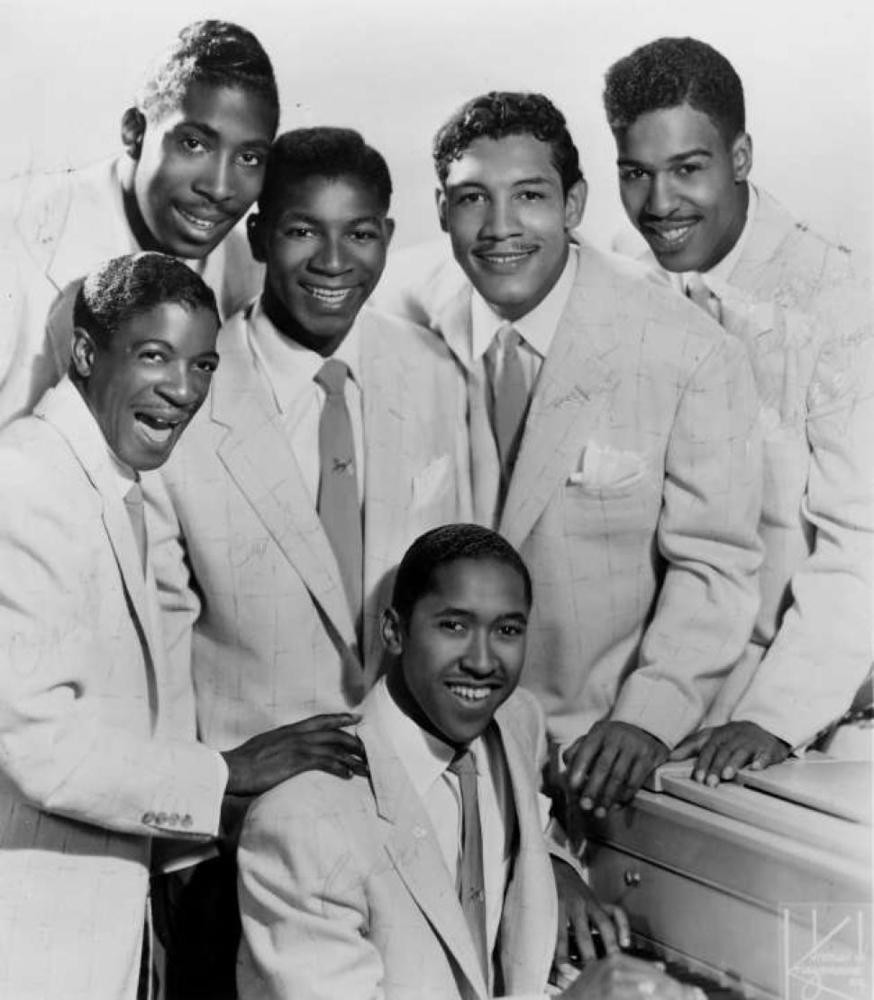The history of rock and roll is paved with countless stories, but few resonate with the blend of triumph and injustice as deeply as that of “Sh-Boom” by The Chords. This quintessential Shaboom Song not only marked a significant milestone as one of the first rhythm and blues tracks by a Black group to crack the Billboard pop top ten, but it also became a poignant example of the racial dynamics and copyright complexities that shaped the early music industry. Let’s delve into the captivating story of this one-hit wonder and explore why “Sh-Boom” continues to enchant audiences decades later.
 The Chords
The Chords
From Street Corner Harmony to National Sensation: The Chords’ Journey
To truly appreciate the impact of “Sh-Boom,” it’s crucial to understand the musical landscape of the early 1950s. The pop charts were largely dominated by white artists performing what was considered polite, middle-class music – think Perry Como, Doris Day, and Rosemary Clooney. This era, in the aftermath of World War II, saw a societal push for a “return to normalcy,” which unfortunately meant sidelining the contributions and voices of Black artists and communities. However, beneath the surface of mainstream pop, a vibrant and innovative music scene was brewing, particularly within Black communities in the Northeast. This was the world of doo-wop, and The Chords were at the forefront.
Doo-wop emerged as an evolution of groups like the Ink Spots and the Ravens, characterized by tight vocal harmonies, a prominent bass vocal often delivering nonsense syllables, and a high tenor lead. It was a sound born on street corners and in social clubs, reflecting the experiences and emotions of urban youth. The Chords, hailing from the Bronx, New York, perfectly embodied this spirit. They weren’t a “bird group” like many of their contemporaries (Ravens, Orioles, Penguins), forging their own identity with a unique blend of vocal talent and streetwise sensibility.
“Sh-Boom”: More Than Just Nonsense, A Cultural Phenomenon
“Sh-Boom,” the shaboom song that would define The Chords, wasn’t initially intended to be a hit. Released as a B-side on Cat Records, a subsidiary of Atlantic, it was a song the label executives reportedly didn’t even like. Yet, the infectious energy and undeniable charm of “Sh-Boom” resonated with DJs and audiences alike, quickly propelling it to unexpected popularity.
The song’s creation story is as unique as the song itself. According to band members, “boom” was a common slang term among them. Jimmy Keyes described it as, “‘Boom’ was the slang word. If you were standing on this block for five minutes, you’d hear that slang word fifteen times or more.” They transformed this everyday slang into a sonic explosion – “shhhhhh-BOOM” – capturing a playful, bombastic energy.
Even the seemingly nonsensical lyrics, like “A langala langala lang,” held personal meaning for the group, referencing church bells they could hear. Another phrase, “here comes Bip, a flip a dooba dip,” was a humorous nod to their Uncle Bip, a homeless relative known for his distinctive aroma. This inside humor and shared experience, embedded within the catchy gibberish, likely contributed to the song’s authentic and relatable feel.
 A jukebox, with the words
A jukebox, with the words
The shaboom song‘s success wasn’t universally celebrated. Satirist Stan Freberg released a parody, mocking both the song and Marlon Brando, tapping into a sentiment that dismissed the song’s lyrical content as unintelligible. Worse, some perceived the nonsense lyrics as a coded message, tinged with racial prejudice, suggesting hidden sexual undertones in the seemingly innocent sounds. However, this criticism overlooked a long history of nonsense lyrics in folk and popular music, dating back to medieval Gregorian chants and folk traditions where meaningless syllables were integrated for rhythmic and melodic effect. “Hey nonny,” often transcribed as part of “Sh-Boom”‘s lyrics, echoes this very tradition, connecting The Chords’ shaboom song to a rich and diverse musical lineage.
Breaking Chart Barriers, Facing Industry Barriers
“Sh-Boom” wasn’t just a catchy tune; it was a cultural breakthrough. It became the first rhythm and blues record by a Black group to penetrate the top ten of the Billboard pop charts. This achievement is particularly significant when considering the complexities of the Billboard chart system at the time. Unlike the UK charts which focused solely on sales, Billboard’s charts were industry-centric, aggregating data from record sales, jukebox plays, radio airplay, and various genre-specific charts. This system sometimes led to songs charting across multiple genres (country, R&B, pop), highlighting the fluidity of musical tastes even within a segregated industry.
The success of “Sh-Boom” on the pop charts signaled a shift, a crack in the wall separating mainstream white pop from the burgeoning R&B scene. Teenagers, particularly white teenagers, were drawn to the youthful energy and relatable themes of doo-wop, finding something new and exciting beyond the adult-oriented pop dominating the airwaves. “Gee” by The Crows, another doo-wop hit, had paved the way, but “Sh-Boom” amplified the crossover appeal, demonstrating the growing influence of Black music on a broader audience.
The Shadow of the Cover: The Crew Cuts and Copyright Injustice
Despite the groundbreaking success of their shaboom song, The Chords’ moment in the spotlight was tragically dimmed by the arrival of The Crew Cuts. This white Canadian vocal group specialized in covering songs by Black artists, often replicating the arrangements note-for-note and achieving even greater commercial success in the mainstream pop market. Their cover of “Sh-Boom” is a stark example of this practice.
To understand the full extent of this injustice, it’s crucial to grasp the nuances of music copyright at the time. Copyright law distinguished between the song itself (melody and lyrics), the specific recording, and the arrangement (stylistic choices in performance). While songs and recordings were copyrightable, arrangements, until the recent “Blurred Lines” case, were not legally protected. This loophole allowed white artists and labels to essentially steal the arrangements and stylistic innovations of Black artists, re-record them, and capitalize on the broader reach of major labels and radio stations that were less receptive to Black performers.
The case of “A Little Bird Told Me” perfectly illustrates this. Paula Watson, a Black artist on a Black-owned label, had a hit R&B song. Evelyn Knight, a white artist on Decca, a major label, released a near-identical cover, which soared to number one on the pop charts, eclipsing Watson’s original success. A lawsuit ensued, but the courts upheld the notion that arrangements were not copyrightable, setting a precedent that had devastating consequences for Black musicians.
The Crew Cuts’ version of “Sh-Boom” was a direct beneficiary of this flawed system. Their rendition, while technically proficient, lacked the raw energy and authentic feel of The Chords’ original shaboom song. Yet, it was The Crew Cuts’ version that gained wider airplay and ultimately became the more commercially successful and culturally dominant version, tragically overshadowing The Chords’ original masterpiece.
Legacy and Lasting Impact: “Sh-Boom”‘s Enduring Charm
The Chords, despite creating the iconic shaboom song, never achieved another hit. Legal battles over their name further hampered their career. While they reunited periodically, the magic of “Sh-Boom” proved elusive to recapture commercially. The Crew Cuts, in contrast, enjoyed a string of hits, built on the backs of Black musical innovation. Their success, however, is a stark reminder of the systemic inequalities within the music industry during this era.
Despite the injustices they faced, The Chords and their shaboom song left an indelible mark on music history. “Sh-Boom” remains a timeless classic, a testament to the infectious energy and enduring appeal of doo-wop. Its playful nonsense lyrics, combined with its sophisticated harmonies and rhythmic drive, continue to captivate listeners across generations. The song’s story serves as a crucial reminder of the complex racial dynamics and copyright battles that shaped the early days of rock and roll, highlighting both the triumphs and tribulations of Black artists who pioneered this transformative musical genre. The shaboom song is more than just a catchy tune; it’s a symbol of resilience, innovation, and the ongoing struggle for recognition and fair compensation within the music industry.

